Archive for April, 2019
Surface Grids & Lasers | Dev Update #2
Apr 26th
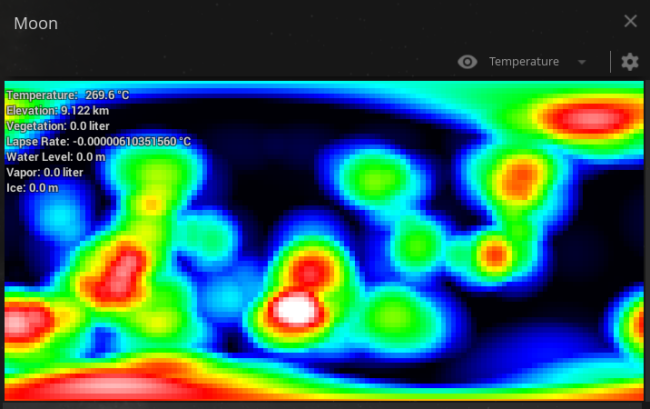
Image: A work-in-progress view of temperature data for the Moon’s surface during Bombardment of the Moon simulation
Here’s our round two update on the development status of Surface Grids and Lasers.
A primer on Surface Grids for anyone not familiar:
It’s a feature we’re developing for Universe Sandbox that makes it possible to simulate values locally across the surface of an object. In effect, it allows for more detailed and accurate surface simulation and more dynamic and interactive surface visuals. It also makes it possible to add tools like the laser, which is essentially just a fun way of heating up localized areas of a surface.
If you haven’t seen it yet, check out our blog post from a couple of weeks ago (we’ll call that Dev Update #1) where we talk about our decision to delay Surface Grids in favor of a rewrite that will better meet our Quality Standards for Awesome Features.
Keep in mind this is a development log for a work-in-progress feature. Anything discussed or shown may not be representative of the final release state of Surface Grids.
Getting Up to Speed
We’re happy with the progress that we’ve made so far on the new Surface Grids. We haven’t encountered any significant roadblocks (knock on wood) and the results we’ve seen are very promising.
Feature development in the beginning can be very exciting, because it can seem relatively quick to set up a framework, especially with a feature like this, where it’s a rewrite of a model we put a lot of work into. Early technical implementations can also give us a good sense of what’s to come and what is possible. At the same time, they can be a little less accessible from an outside perspective because they don’t have any of the polish and pizazz of a complete feature. At this point progress can also be a bit misleading, because often times the longest and most challenging part of development comes later, when we’re tweaking, polishing, finding and fixing bugs, and making sure all the complexities of the fully fleshed out model play nicely with each other and the rest of the simulation.
But let’s not get too ahead of ourselves — here’s a look at the progress we’ve made so far.
Zoom, Enhance!
As mentioned in our last post, concerns about performance with our old model played a significant part in our decision to do a rewrite. Performance relates directly to the resolution of the model: a higher resolution means more computations and slower performance. But the resolution of the model determines just how detailed the data and visuals can be, so a lower resolution model makes it that much less interesting.
The old model was scalable and the image below represents a fairly low resolution for the model, but it was also the baseline that we were working with because of performance concerns. In other words, we could run it at a higher resolution, but performance quickly took a hit once there were a bunch of objects in a simulation all running Surface Grids. Turning down the resolution helped, but not enough.
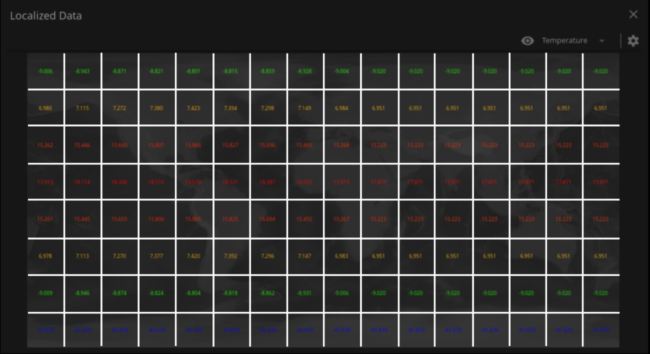
Compare that with the resolution of this new model, where each pixel is equivalent to a grid square in the above image.
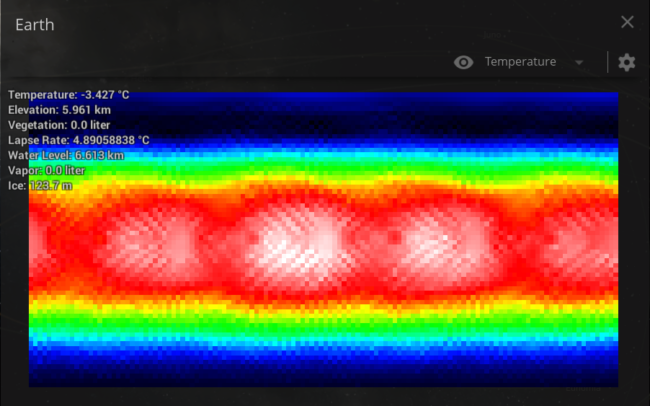
See the difference? Generally speaking, the new version of Grids is at least 100 times faster than the old version. Yes, that is much, much faster. And it makes us very, very happy.
This clip shows a data map of Earth’s temperature as it becomes tidally locked. And, importantly, there are also 99 other Earths in this simulation all running their own equally high-res Surface Grids model.

A big thank you to our lead developer, Chris, for creating this new, powerhouse version of Surface Grids.
Water World
There’s another new feature in this model that we didn’t have before: simulated water flow.
Currently water flow is affected by elevation, which in turn can be affected by impacts. Our wish-list for the future of Surface Grids includes elevation-editing tools, but right now we’re not expecting those anytime soon (including the first release version).
This clip briefly shows typical water flow on Earth (currently the model runs even while paused) before it’s affected by an impact with the Moon.

Water flow is a pretty experimental aspect of the model right now, so it’s especially likely this will change significantly as we continue development.
Getting the Data Right
We’d consider the whole of Surface Grids a wash if the data wasn’t based on science. But good news: it sure is based on science.
Jenn, Universe Sandbox astrophysicist and developer, has been busy getting all the data and numbers right in the technical framework. Sometimes a model will produce interesting and compelling results, but if the numbers aren’t based in science and the results aren’t showing what we’d expect to see for an accurate (though simplified) model, then it doesn’t meet our goals for a Universe Sandbox feature.
Building an accurate, generalized model for this is no easy task. It has to handle a range of materials (silicate, water, etc.) at different phases (solid, liquid, gas), all determined by other factors like elevation and temperature; each point has to interact with the rest of the grid, the rest of the Universe Sandbox simulation, and any user input; it has to run in real time; and in a normal state, it has to produce something that looks like the Earth or Mars we’re familiar with. Fortunately, this is well tread territory at this point, as Jenn solved a lot of these problems with the last model of Surface Grids.
What’s Next for Grids
We feel very good about the progress we’ve made so far and we plan to keep moving forward at this pace. We’ll continue with the technical implementation while also adding and double-checking the scientific layers of the model.
You’ll notice in the tidal-locking clip above that we only showed the data map, not the actual planet itself, as its local temperature shifted. That’s because there’s not much to see yet (compare to the visual state of the last model as seen in the last post). We love data, but we also love planet surfaces that look pretty and glow. The surface visuals are an important part of Surface Grids, and now that we have the technical framework laid out, it’s time to make it look good. Our graphics developer, Georg, is just getting started on these visual aspects, which are also based on his previous work on the old Grids model. We look forward to sharing his work in a future Grids posts!
Bringing the Magic of Universe Sandbox to Magic Leap
Apr 16th
Indie Creator Program
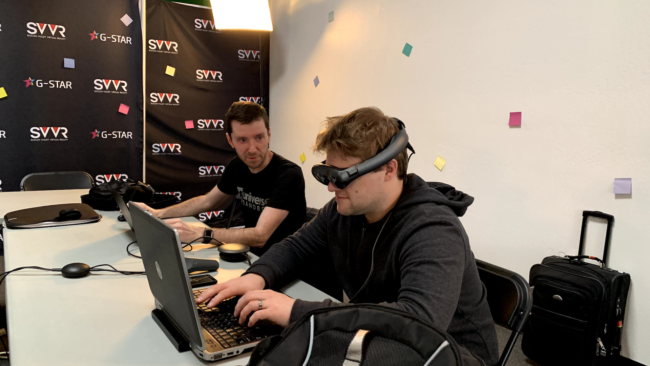
The news is out, we got a grant to develop Universe Sandbox for Magic Leap! Out of the 6,500 applicants that applied for Magic Leap’s Independent Creator Program, we were one of the lucky 30 that were accepted. We’re excited to join the company of other great indie developers and excited to bring the Universe Sandbox experience to Magic Leap.
If you’re not familiar, Magic Leap creates mixed-reality (MR) technology. Like VR, MR utilizes a headset and a motion-tracked controller for interaction. But unlike VR, the real world doesn’t disappear when you put on the Magic Leap headset. MR creates a map of the physical world around you and then superimposes digital images over it, bringing objects to life by making them appear like they are right there in front of you.
And with the mapping and object detection, the real world can interact with the digital world, allowing you to do things like smash planets against your wall.
Bootcamp
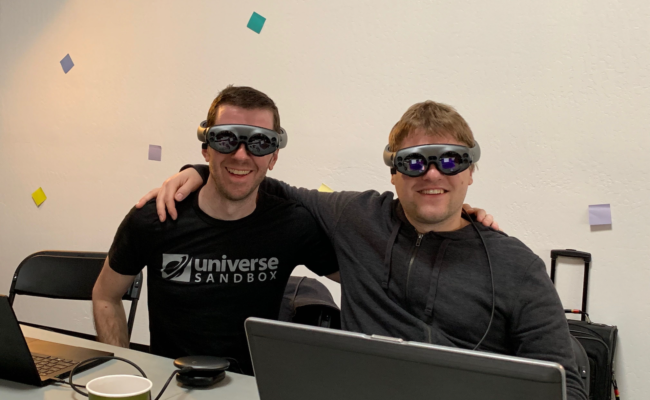
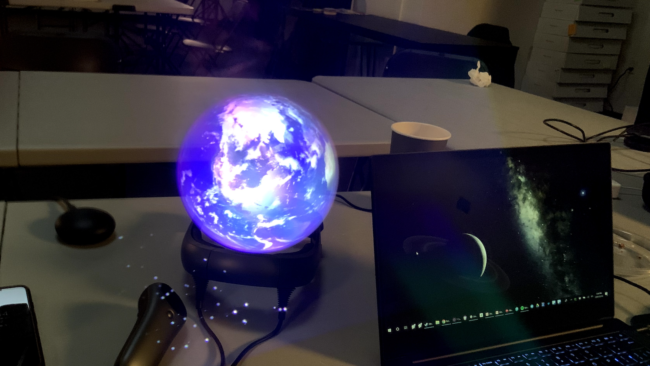
The very first step of development. Viewing Earth in Universe Sandbox through Magic Leap.
In February, Dan (Universe Sandbox creator & director) and Dave (Universe Sandbox mobile developer) went to California to attend the Magic Leap Creator Bootcamp. The Bootcamp was a crash-course in Magic Leap development, with discussions about the hardware, technical considerations, best design practices, and everything else creators like us need to know to make our magic happen.
It was an inspiring few days and a great opportunity for us to see what others are working on and what is possible for Universe Sandbox. We received some quality feedback on our plans as well as some exciting ideas for new directions.
Improving Universe Sandbox on Every Platform
Developing Universe Sandbox for Magic Leap is without a doubt exciting. But we don’t think about this development work as existing in a vacuum. While we continue to develop for desktop, we’re completely rewriting our VR interface, we’re polishing and optimizing for mobile, and we’ve now begun this work for Magic Leap. Further in the future, we’d like to do console versions, too. A key part of our vision for all of this is that the Universe Sandbox experience is never watered down. We want to make it possible to do the same things with Universe Sandbox in VR and on your phone that you already do on your desktop.
Of course, different platforms have different strengths and weaknesses; our design decisions are affected by these considerations for different hardware, different input, etc. But we can still aim for the power and flexibility that exists in the desktop simulation and interface.
Some of the design problems we face with Magic Leap will require developing solutions that improve all platforms. We expect the work we do on the interface will have a lot of significance for both the VR version and the mobile version that we are working on. And the performance optimizations we make while getting Universe Sandbox running on the Magic Leap headset will certainly have a ripple effect and improve performance on every other platform.
We look forward to sharing more about this journey as we continue development for Magic Leap!
What’s Next for Universe Sandbox | Spring 2019
Apr 10th
Delayed Gratification
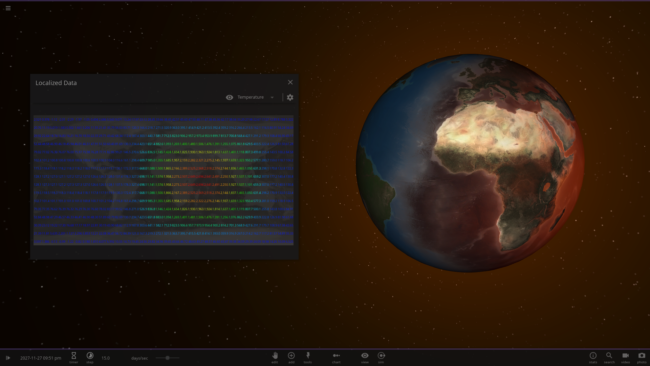
We know many of you have been patiently waiting for two of our next big features, Surface Grids & Lasers. We believe these features will be an awesome addition to the core Universe Sandbox simulation and experience, and we know from your excitement that you agree.
Not familiar with Surface Grids? It’s a feature we’re developing for Universe Sandbox that makes it possible to simulate values locally across the surface of an object. In effect, it allows for more detailed and accurate surface simulation and more dynamic and interactive surface visuals. It also makes possible tools like the laser, which is essentially just a fun way of heating up localized areas of a surface.
Short Version
If you’re a fan of treating bad news like a bandaid that needs to be ripped off, here’s the short version: We chose to further delay the release of Surface Grids & Lasers because our implementation was not meeting our expectations. We are now applying our work to a completely new approach that we think will be well worth the wait. We hope to have it ready this summer. Thank you for your patience!
And in the meantime, we hope to release some new simulation features: improved physics and new galaxies. Read more about these below.
Long Version
And if you’re curious, here’s the longer version: Last month we sat down for a team meeting on the status of Surface Grids and Lasers and had to make a difficult decision. The features weren’t quite living up to our expectations and standards. While we were continuing to make progress on development, we were also continually running into problems and were pushing the technical limitations of the system we had implemented, all with diminishing returns. We could either continue to work through all of the issues that remained and end up with something that met most of our high-level design goals but fell short on performance, or we could take everything we had learned and reimplement it in an entirely new system that would meet even more of our goals, be exponentially faster, bypass some of the issues we were trying to solve, and have much more room for future expansion. That makes it sound like a clear choice, but there were a couple of drawbacks: there were some technical compromises with this proposed new system, and pursuing it meant that we’d have to further delay the release of these features, something that we knew both we and our fans would not prefer. But after more discussion, we decided we didn’t want to compromise the quality of these features — let’s delay a bit, work on this better version, and release something that we’re very proud of. Please know that we are committed to new features and improvements and to the long-term future of Universe Sandbox development. We’re even expanding our team again — come join us as a Graphics Developer or Spaceship Physics Developer!
We can’t give a release date yet for Surface Grids & Lasers, but our plan moving forward is to provide an update every two weeks on their development. Below is a preview of what’s to come, showing a tidally-locked Earth close to the Sun where the back side freezes over and the near side becomes molten. And wait for the laser at the end!
Please note: the following image and the image at the top of this post are from the previous implementation of Surface Grids. We hope to go above and beyond what can be seen here for our new implementation, but the feature is subject to change and these may not be representative of its final state.

Improved Physics & New Galaxies
While we all wait as patiently as possible for Surface Grids and Lasers, we hope to deliver on two other features that have also been a long time coming: 1) a new, faster, and more stable physics system and 2) brand new galaxies.
Faster & More Stable Physics
The new physics system actually followed a similar development story as the one above about Surface Grids. After a long time spent working on the new system, the bulk of it was finished but stubborn issues stood in the way of its release, and new ones seemed to pop up every week. Eventually, we decided to cut our losses and run with a brand new system that was suddenly feasible thanks to some new Unity technology. Turns out this was a great move — we already have an experimental version of this new physics system available in Update 22.2 (learn more about trying it out). We hope to have the remaining kinks worked out soon so we can release it officially and get to work on some exciting new physics features again.
Brand New Galaxies
We also have already made great progress on a rewrite of galaxies, finally showing them the love that they have long deserved. These new galaxies will be much more varied, more interactive, and more accurate in simulation and appearance. The GIFs below do not show the latest visual changes, but they do a great job of showing how much more dynamic these galaxies are.
They will allow real-time editing of their properties, just like with any other object in the simulation:

And here you can see a series of procedurally generated galaxies added to a simulation:

We’re super proud of how galaxies have been shaping up so far. They’re impressive technically, scientifically accurate, fun to play with, and they’re looking pretty good, too. That checks all of our boxes for a quality Universe Sandbox feature. We look forward to sharing them in the future.
Revamped Vapor & Engine Experiments | Update 22.2
Apr 10th
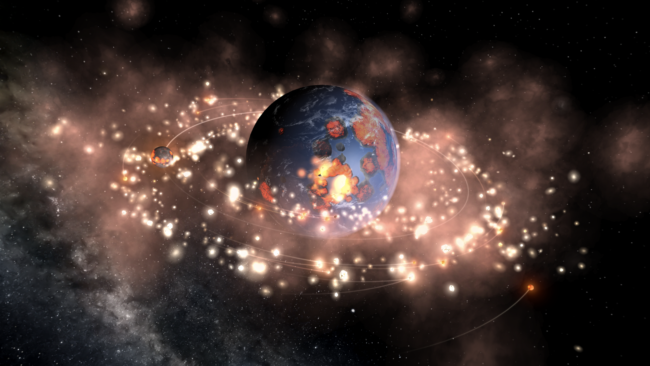
April 18: 22.2.1 & 22.2.2 address a Mac-specific issue that caused crashes while using the Add panel. Known Mac issue: loading “Solar System Planets, Moons, and Large Objects” simulation sometimes results in a crash.
Run Steam to download Update 22.2, or buy Universe Sandbox via our website or the Steam Store.
This update adds improved vaporization effects that are more accurate and colorful. It also introduces an experimental version of our new physics system that makes gravity simulation faster, more stable, and more accurate. We’d love it if you tried it out and helped us test it!
Home > Try New Physics
Please remember this system is still experimental. If you experience any problems, let us know! You can report any issues on our forums (local forum | Steam forum) or via Home > Send Feedback.
There are also dozens of smaller improvements and fixes. Here are some of the highlights:
- Added Fahrenheit as a temperature unit
- Added Filipino to available languages
- Improved Search in Open panel
- Trails & orbits work on older hardware again
- Object lighting on Linux works again
- New simulation with all planets, moons, and large Solar System objects
Check out a full list of What’s New in Update 22.2
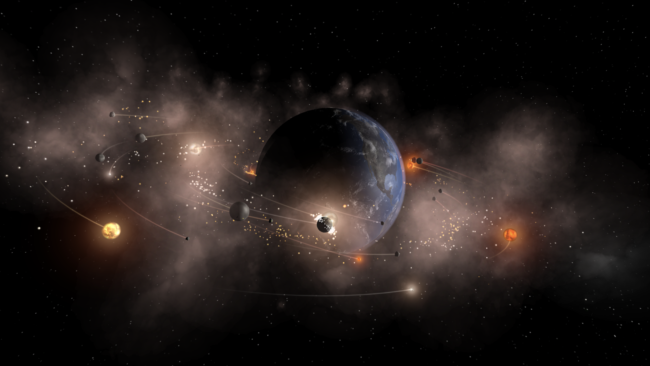
We’re excited for the upcoming official release of this new physics system so that everyone can enjoy the improvements to performance and accuracy. We’re also working on brand new galaxies and, while we had a setback with Surface Grids & Lasers, we are now making good progress again. Learn more about our progress on these features
We’re hiring a Graphics Developer! Learn more and apply
We’re hiring a Spaceship Physics Developer! Learn more and apply
Universe Sandbox Takes Off in China
Apr 2nd
The Wandering Earth

Have you heard of the sci-fi blockbuster The Wandering Earth? While it has had modest success with a limited release in the United States, it is now China’s second-highest-grossing film of all time with over $679 million in domestic box office sales.
The screenplay is based on a story by Liu Cixin, a renown Chinese sci-fi author who has popularized the genre with his award-winning stories, including the novel The Three-Body Problem (which also has a movie adaptation in the works and received praise from Barack Obama).
Simulating a Disaster Film
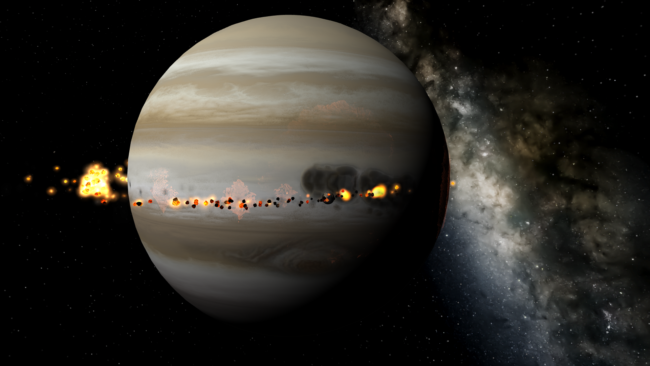
Earth being ripped apart by Jupiter’s tidal forces in Universe Sandbox.
Critics say The Wandering Earth often falls victim to the trappings of disaster films (overblown CGI, heavy-handed sentimentality, etc.), but what excites us is the scenario that plays out in the film.
To us, the plot summary reads like a description of a simulation in a not-too-distant version of Universe Sandbox: [SPOILERS] In the future, Sun evolves into red giant and threatens Earth habitability → Gigantic thrusters are attached to Earth (you better believe this fits well into our development plans) → Earth is propelled farther from the Sun and freezes over → Tidal forces from Jupiter wreak havoc as Earth approaches the gas giant and prepares for collision → A GIF of this terribly interesting disaster is captured and the simulation is shared to Steam Workshop… oh wait that part wasn’t in the film.
Of course, we weren’t the only ones to see this potential. Video creators in China familiar with Universe Sandbox immediately got to work simulating the events of the film.
Here are a couple of the more popular ones that we’re aware of:
Sales Boost
The news of the rising popularity of these videos in China was shared with us by our proofreader for the Chinese language in Universe Sandbox. And sure enough, this correlated with a sharp rise in Universe Sandbox sales in China that we had noticed a week before, along with an influx of Steam reviews written in Chinese (some of which mentioned The Wandering Earth explicitly).
The overlap with Steam’s Lunar New Year sale meant that, for the first two weeks in February, Universe Sandbox copies sold in China made up 50% of our total sales on Steam. Compare this to the previous two weeks, when Chinese sales accounted for only 7% of total sales.
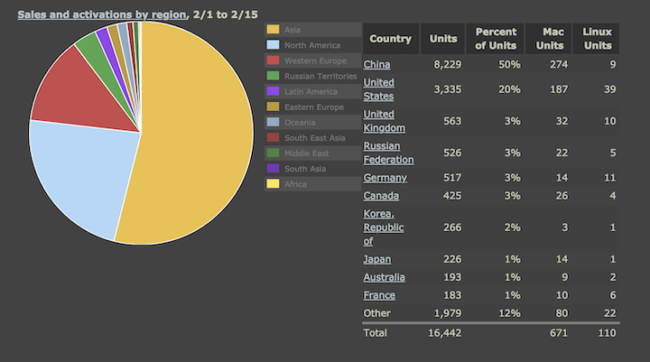
Translating Chinese
Needless to say, we’re extremely grateful for the exposure brought to us by The Wandering Earth and the content creators who used Universe Sandbox to explore its premise. It’s also not hard to imagine that our support for Chinese in Universe Sandbox, which we added last summer, also played a part in making it more accessible and appealing to Chinese players. That said, we don’t want to overlook some criticism we have received about the current Chinese translations. Some reviewers noted that, while it’s appreciated that there is support for Chinese, the translations themselves could be vastly improved.
As with all of the languages we support, we currently rely on community volunteers to suggest improved translations and vote on the best ones. We have contributors now, including a proofreader who approves the best translations, but this is a big project — we are often changing and adding text, and we have no way ourselves to review the quality of the translations. We hope that as the community grows, we have more community members able to help improve these translations.
Want to help translate? Just click “Help Translate” on the Home panel and follow the instructions. Learn more
Want to be a proofreader that approves translations? Let us know!
